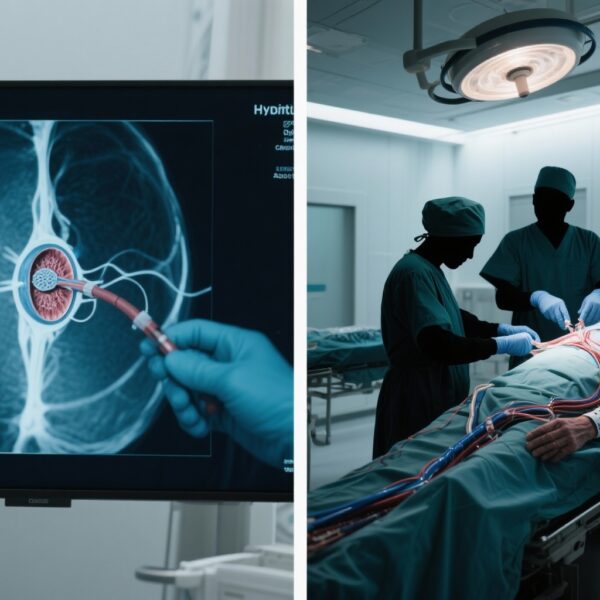Highlights
• FANCOLEN‑1 is the first reported trial demonstrating sustained engraftment of autologous FANCA‑corrected haematopoietic cells in non‑conditioned patients with Fanconi anaemia‑A.
• At 2 years post‑infusion, 5 of 8 evaluable patients (62.5%) met the prespecified engraftment efficacy endpoint; median vector copies per nucleated cell were 0.18 in bone marrow and 0.06 in peripheral blood.
• No gene therapy–related genotoxic events were observed during follow‑up (up to 7 years for long‑term trial), and most treatment‑emergent adverse events were non‑serious and unrelated to the vector.
Background: disease burden and unmet need
Fanconi anaemia (FA) is a rare, genetically heterogeneous disorder of DNA repair characterized clinically by progressive bone marrow failure (BMF), congenital anomalies, and markedly increased cancer risk. Patients typically present in childhood or adolescence with cytopenias across one or more lineages and require supportive care, transfusions, and infection management. Allogeneic haematopoietic stem cell transplantation (HSCT) is the only curative therapy for BMF, but HSCT in FA is challenging: patients are unusually sensitive to cytotoxic conditioning regimens, treatment‑related morbidity and mortality remain significant, and post‑transplant risks include graft‑versus‑host disease and second malignancies.
Gene therapy using autologous haematopoietic stem/progenitor cells (HSPCs) offers a rational alternative: ex vivo correction avoids graft‑versus‑host disease, and autologous cells eliminate the need for a matched donor. However, historically gene‑modified HSPC engraftment has relied on myeloablative or reduced‑intensity conditioning to create marrow niche space; in FA patients, such cytotoxic conditioning is especially hazardous. Demonstrating durable engraftment without genotoxic conditioning would therefore be a major advance.
Study design and methods
FANCOLEN‑1 was an open‑label, investigator‑initiated phase 1/2 trial conducted in Spain, with an associated long‑term follow‑up protocol extending to up to 7 years post‑treatment. Nine patients with molecularly confirmed Fanconi anaemia‑A who had early-stage bone marrow failure underwent mobilisation and apheresis to collect peripheral blood (PB) CD34+ cells. Cells were transduced ex vivo with a therapeutic lentiviral vector encoding functional FANCA and reinfused without any cytotoxic conditioning regimen.
The prespecified primary efficacy endpoint for the phase 1/2 study was evidence of engraftment of transduced cells, operationalized as detection of at least 0.1 therapeutic vector copies per nucleated cell in bone marrow (BM) or peripheral blood (PB) at year 2 post‑infusion, without a substantial decline from year 1. The safety co‑primary endpoint was occurrence of adverse events during the 3 years after infusion. The study was registered (ClinicalTrials.gov NCT03157804; EudraCT 2011‑006100‑12) and continued under long‑term follow‑up (NCT04437771).
Key findings and detailed results
Population and evaluability: Of nine treated participants, eight were evaluable for the primary endpoint. Patients were recruited between Jan 7, 2016 and April 3, 2019 and followed per protocol, with long‑term surveillance ongoing.
Primary efficacy outcome
Five of eight evaluable patients (62.5%) met the prespecified primary engraftment endpoint at year 2. Median therapeutic vector copies per nucleated cell at year 2 were 0.18 (IQR 0.01–0.20) in bone marrow and 0.06 (0.01–0.19) in peripheral blood. These measurements indicate measurable and sustained presence of transduced cells without prior cytotoxic conditioning.
Clinical haematological effects
Although specific lineage counts and transfusion dependence details are not exhaustively reported in the summary, the investigators report reversal of progression of BMF in treated patients, consistent with functional hematopoietic contribution from corrected cells. This clinical signal is important because even low levels of corrected HSPCs can produce meaningful multilineage benefit in marrow failure syndromes, if they engraft long term.
Safety outcomes
No genotoxic events attributable to the gene therapy were observed during the reported follow‑up (up to 7 years in the long‑term trial). Across participants, most treatment‑emergent adverse events (TEAEs) were non‑serious and assessed as unrelated to the therapeutic FANCA‑encoding lentiviral vector. Six patients experienced nine serious adverse events (grade 3–4); one event was considered related to the medicinal product infusion. All serious events resolved without sequelae. The most frequently reported TEAEs were cytopenias and viral infections typical of childhood illnesses.
Vector biology and genotoxicity considerations
The use of a lentiviral vector encoding FANCA in an ex vivo corrected autologous product is intended to reduce insertional oncogenesis risk relative to historical gammaretroviral vectors. The absence of observed genotoxicity in this cohort is reassuring but limited by sample size and follow‑up duration: long‑term surveillance remains necessary because insertional events can have delayed presentations. Molecular monitoring of insertion sites and clonal dynamics is critical; the published report indicates no signal of clonal dominance or malignant transformation to date.
Expert commentary: interpretation, limitations, and translational implications
These data provide the first clinical demonstration that autologous HSPC gene therapy can produce sustained engraftment and clinical benefit in FA‑A patients without exposure to genotoxic conditioning. This addresses a key unmet need: offering a potentially curative haematopoietic strategy while avoiding the short‑ and long‑term toxicities of cytotoxic preparative regimens.
Strengths of the study include a biologically plausible intervention (restoring a defective DNA repair gene in HSPCs), use of modern lentiviral vectors with improved safety profiles, and prospective long‑term follow‑up. The fact that a meaningful proportion of patients achieved the efficacy endpoint despite no conditioning suggests that corrected HSPCs may have a selective advantage in FA marrow or that mobilised and reinfused corrected cells can home and persist at clinically useful levels.
However, several limitations temper enthusiasm. The cohort is small (eight evaluable patients) and heterogeneous, and the follow‑up—while extending up to several years in the long‑term protocol—remains limited for firm conclusions about late genotoxicity and durability into adulthood. The prespecified efficacy threshold (≥0.1 vector copies/nucleated cell) is a molecular surrogate; correlating vector copy number with long‑term clinical outcomes (lineage recovery, transfusion independence, infection rates, and cancer incidence) will be essential.
Generalizability may be constrained: these patients had early‑stage BMF and were selected for a specific molecular subtype (FANCA). Whether non‑conditioned gene therapy would achieve similar results in patients with advanced marrow failure, other FA complementation groups, or older individuals is unknown. Additionally, manufacturing scalability, regulatory considerations, and cost remain practical hurdles before broader adoption.
Mechanistically, corrected HSPCs in FA may enjoy a selective survival/replicative advantage in vivo because cells with restored DNA repair are less susceptible to the progressive attrition that characterizes FA marrow. This potential selective pressure could explain engraftment without conditioning; further mechanistic studies are warranted.
Conclusion and implications for practice and research
The FANCOLEN‑1 results are an important proof‑of‑concept: autologous lentiviral gene therapy can achieve sustained engraftment and reverse progression of bone marrow failure in a majority of treated FA‑A patients without cytotoxic conditioning, with an acceptable short‑term safety profile and no detected genotoxicity to date.
For clinicians and researchers, these findings justify continued development and larger, ideally multicentre, trials with standardized clinical endpoints, longer follow‑up, and rigorous molecular monitoring. Key questions for future work include efficacy in more advanced disease, extension to other FA complementation groups, optimization of cell dose/manufacturing, and comparative effectiveness versus contemporary HSCT strategies. Ultimately, if durability and safety are confirmed, non‑conditioned autologous gene therapy could become a paradigm‑shifting option for FA patients who are poor candidates for conventional conditioning and allogeneic transplantation.
Funding and trial registration
Funding was provided by the European Commission, Instituto de Salud Carlos III, and Rocket Pharmaceuticals. Trials were registered as ClinicalTrials.gov NCT03157804, EudraCT 2011‑006100‑12, and ClinicalTrials.gov NCT04437771.
References
1. Río P, Zubicaray J, Navarro S, et al.; FANCOLEN‑1 gene therapy investigators. Haematopoietic gene therapy of non‑conditioned patients with Fanconi anaemia‑A: results from open‑label phase 1/2 (FANCOLEN‑1) and long‑term clinical trials. Lancet. 2024 Dec 3;404(10471):2584‑2592. doi:10.1016/S0140‑6736(24)01880‑4. PMID: 39642902.
2. D’Andrea AD. Susceptibility pathways in Fanconi anaemia and breast cancer. N Engl J Med. 2010 May 13;362(19):1909‑1919. doi:10.1056/NEJMra0901283.
3. Kutler DI, Auerbach AD, Satagopan J, et al. High incidence of head and neck squamous cell carcinoma in patients with Fanconi anemia. Clin Cancer Res. 2003 Dec;9(12):4137‑4142.
4. Bagby GC. Fanconi anemia: the challenges of the diagnosis and management of a multisystem disorder. Hematology Am Soc Hematol Educ Program. 2010;2010:69‑75. doi:10.1182/asheducation‑2010.1.69.



